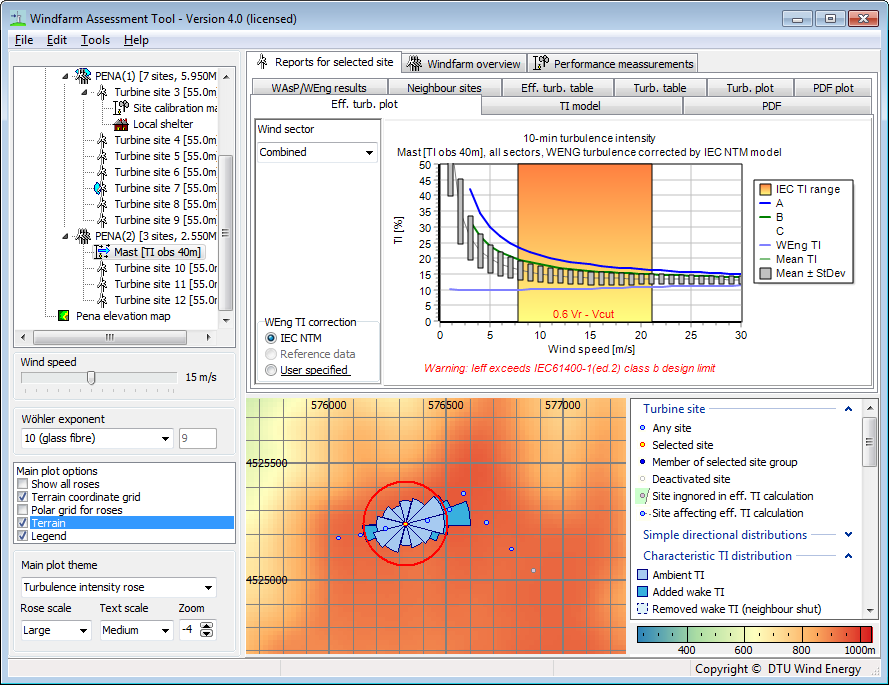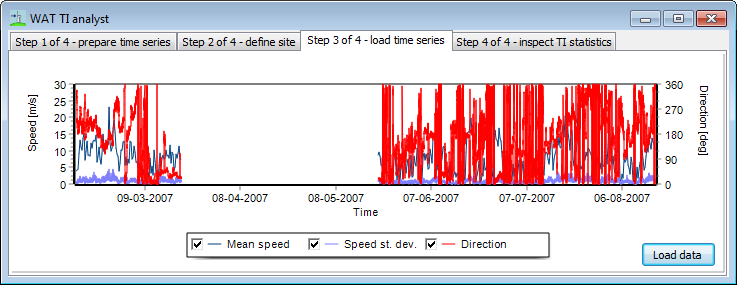Site assessment with WAT
To prepare a site assessment with WAT, you model the wind farm with WAsP Engineering (WEng) and call a special module calculating wind, turbulence, and mean wind climate for individual turbine sites. The mean wind climate is actually calculated with a call to a WAsP DLL, so you need a twin WAsP/WEng license for this. The combined WAsP/WEng results are collected and loaded into WAT. At this stage WAT will prompt for a WAsP turbine generator file and an IEC wind turbine class. You can merge WEng results for several turbines groups, in case the hub heights differ.

The main objective of WAT is to calculate effective turbulence in wind farms with irregular turbine layout. This is done for individual turbine sites using wind direction distributions conditioned by local wind speed. Wakes from neighbour turbines are estimated by the wind speeds at these neighbour sites corrected for terrain-induced speed up and wake effects of turbines further upstream. The first figure below shows a WAT prediction of turbulence intensity as a function of wind direction. Everything in this plot, including the effective turbulence intensity marked by the horizontal red line, will depend on wind speed. The second figure compares the effective turbulence intensity as a function of wind speed to the NTM model. The IEC site assessment rule is that effective turbulence intensity must not exceed the NTM model corresponding to the selected wind turbine class in the wind-speed range marked by the orange box. To identify potential problems you can inspect such figures for individual turbine sites or read a summary of conclusions. This summary includes site assessment criteria like extreme wind, shear, and flow inclination


WEng turbulence intensity estimates does not account for non-steady mean wind or atmospheric stability, which is indeed difficult to model for sites in real terrain. To account for such effects the previous WAT versions simply used the NTM model with an offset matching the neutral-stability WEng turbulence estimate at high wind speed. This was, however, felt to be a too conservative method, so the new WAT 4 includes an option for turbulence statistics based on field measurements. With this approach you first model turbulence at the measurement position with WEng. These results are ported to WAT where differences between WEng turbulence estimates at turbine sites and reference mast are used to extrapolate measured turbulence statistics to turbine sites.

